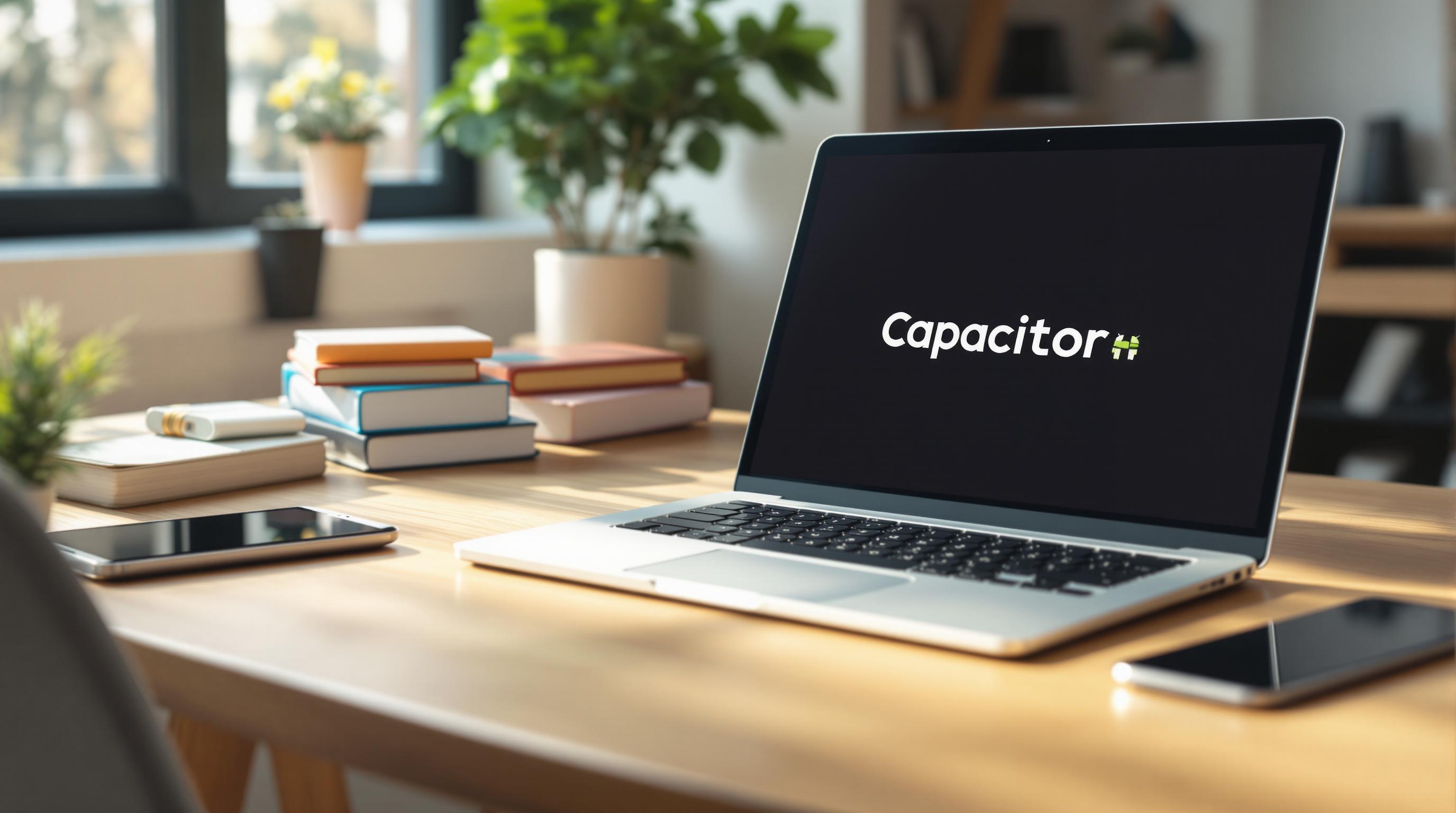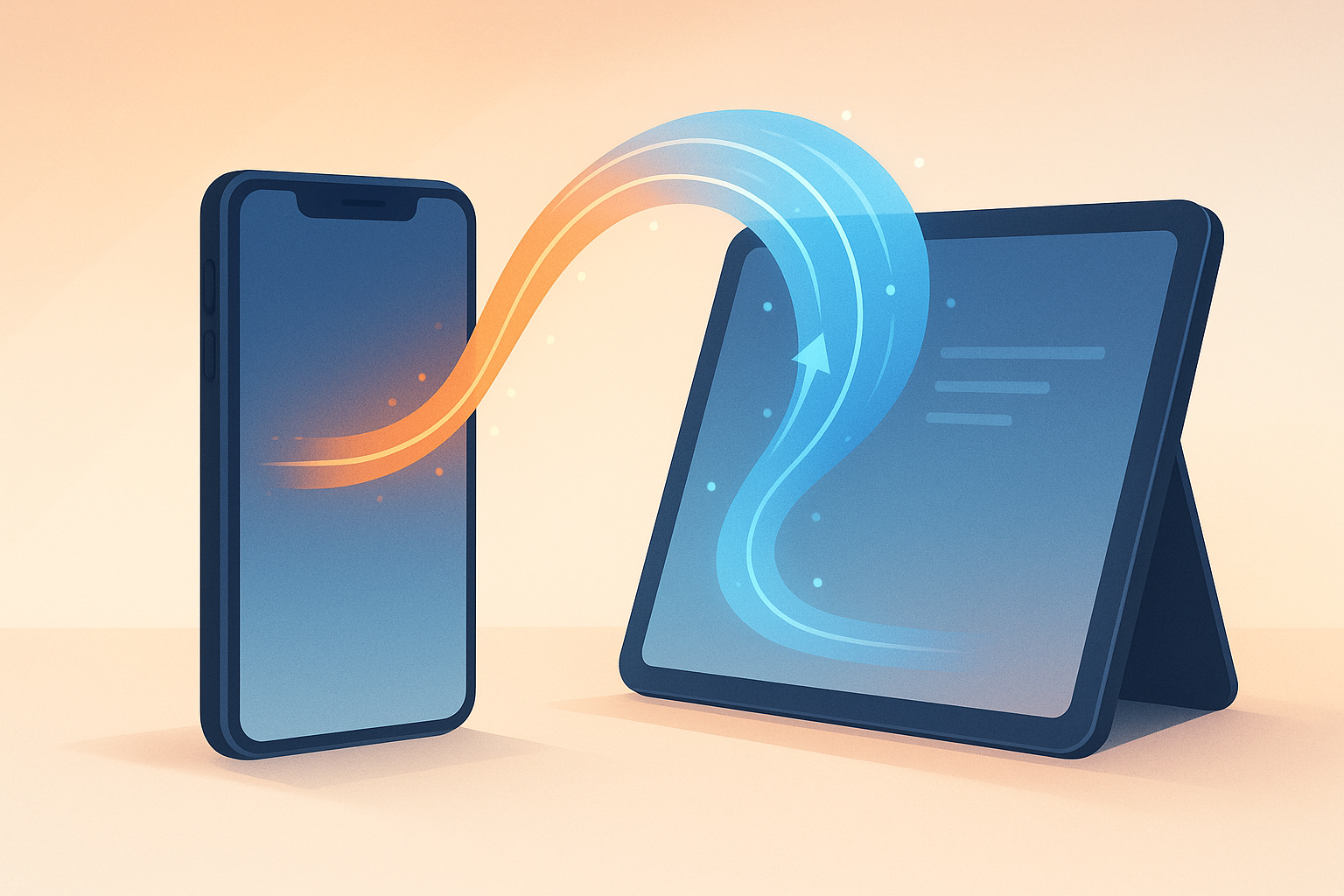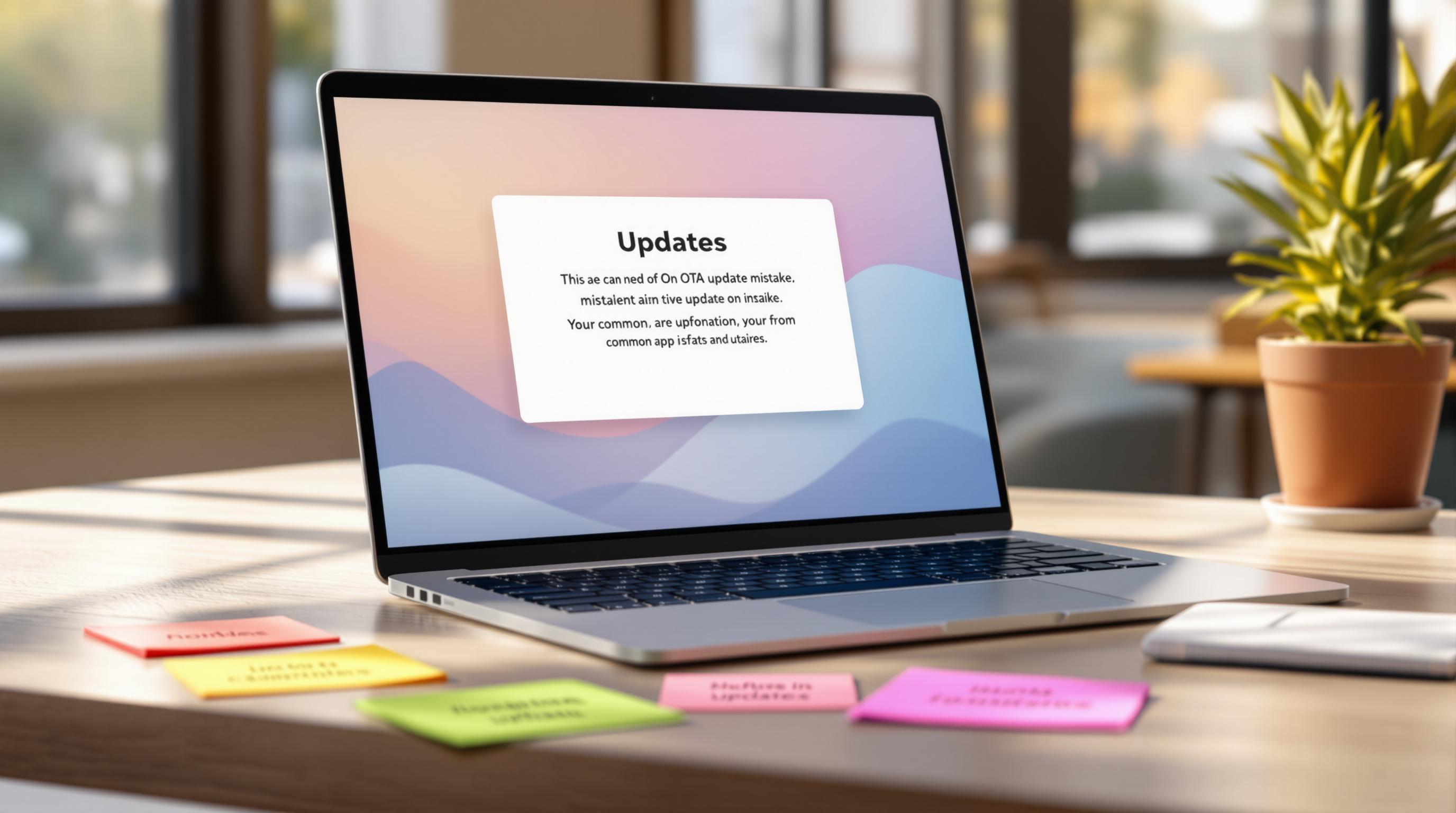Want to build Android apps with Capacitor? Here’s everything you need to set up your development environment quickly and efficiently. Capacitor bridges web technologies with native Android features, and getting started requires a few essential tools and configurations.
What You’ll Need:
-
Core Software:
- Android Studio (latest version)
- JDK 17+
- Node.js (latest LTS)
- Capacitor CLI
-
Hardware Requirements:
- Minimum: Intel i5, 8GB RAM, 256GB HDD
- Recommended: Intel i7/i9, 16GB+ RAM, 512GB SSD
Quick Steps:
- Install Android Studio and complete the setup wizard.
- Configure the Android SDK with API Level 33 and required tools.
- Set environment variables for the Android SDK.
- Add Android support to your Capacitor project with
npm install @capacitor/android. - Test your setup by creating a basic app and running it on an emulator or device.
Key Features to Leverage:
- Live Updates: Push updates instantly using tools like Capgo.
- Native Features: Access Android-specific APIs for advanced functionality.
- Real-Time Monitoring: Quickly address issues during development.
By following these steps, you’ll be ready to develop, test, and deploy Android apps using Capacitor. Let’s dive into the details.
Required Setup Components
Core Software Components
To get started with Android development, you’ll need to install these key tools:
- Android Studio: This is the official IDE for Android development. It includes all the necessary tools and features for building Android apps.
- Java Development Kit (JDK): Needed for compiling and running Java code. To ensure compatibility with Capacitor 6 and 7, use JDK version 17 or later.
- Node.js: A JavaScript runtime environment that powers Capacitor’s build processes and CLI tools. Install the latest LTS (Long-Term Support) version for the best experience.
- Capacitor CLI: A command-line tool for managing Capacitor projects, including adding platforms, building, and deploying apps.
These tools are essential for setting up your Android development environment. Once installed, make sure your hardware meets the following requirements.
Hardware Requirements
Your development machine should meet these minimum specs, but better hardware will improve performance:
| Component | Minimum Requirements | Recommended Specifications |
|---|---|---|
| Processor | Intel i5 (6th gen) or similar | Intel i7/i9 or AMD Ryzen 7/9 |
| RAM | 8GB | 16GB or more |
| Storage | 256GB HDD with 10GB free | 512GB SSD or larger |
| Display | 1280 x 800 resolution | 1920 x 1080 or higher |
| Operating System | Windows 10 (64-bit) / macOS 10.14 | Windows 11 / macOS 13+ |
For running Android emulators efficiently, hardware acceleration is a must:
- Windows: Requires Intel HAXM or Windows Hypervisor Platform.
- macOS: Hardware acceleration is built-in.
- Linux: Use KVM virtualization.
Keep in mind that Android Studio and emulators can be demanding on your system. Ensure your machine has proper cooling and a stable internet connection for downloading SDK components.
Once your setup is ready, the next step is configuring Android Studio to integrate these tools into your workflow.
Android Studio Setup

Android Studio is a must-have for developing with Capacitor on Android. Setting it up correctly ensures a smooth workflow and better performance.
Installation Steps
-
Go to the official Android Developer website at developer.android.com/studio.
-
Download the latest stable version of Android Studio (2023.1.1 or newer).
-
Follow the installation process:
- Windows: Run the installer, stick with the default location and components, and confirm memory settings.
- macOS: Drag Android Studio into the Applications folder and launch it.
- Linux: Extract the archive, move it to the
/optdirectory, and run thestudio.shscript.
Once installed, tweak Android Studio’s settings to work seamlessly with Capacitor projects.
Basic Configuration
A few key configurations in Android Studio will make it work efficiently with the Android SDK and Capacitor.
Initial Setup:
- Complete the Setup Wizard.
- Select the “Standard” installation type.
- Pick a UI theme (light or dark mode).
- Verify your system settings.
Performance Tweaks:
| Setting | Recommended Value | Purpose |
|---|---|---|
| Memory Heap | 2048 MB | Speeds up the IDE |
| VM Options | -Xmx4096m | Improves build performance |
| Gradle JDK | Version 17 | Ensures Capacitor support |
Setting Up the Emulator:
- Open the AVD Manager from Tools > Device Manager.
- Click “Create Virtual Device.”
- Pick a hardware profile:
- Phone: Pixel 6 Pro (recommended)
- Tablet: Pixel Tablet
- Choose a system image:
- API Level: 33 (Android 13)
- Target: x86_64
- Adjust the AVD settings:
- RAM: 2048 MB
- Internal Storage: 2048 MB
- SD Card: 512 MB
“We practice agile development and @Capgo is mission-critical in delivering continuously to our users!” - Rodrigo Mantica [1]
For more details on Capgo-specific configurations, check out the Capgo Integration section later in this guide.
Android SDK Configuration
The Android SDK is essential for building and deploying Android apps. It simplifies both development and deployment processes.
SDK Component Installation
To install the necessary components, open the SDK Manager in Android Studio by navigating to Tools > SDK Manager.
Here are the required components for Capacitor development:
| Component | Version | Purpose |
|---|---|---|
| Android SDK Platform | API 33 (Android 13.0) | Provides the latest stable platform for app development. |
| Android SDK Build-Tools | 33.0.2 or newer | Includes key build utilities. |
| Android SDK Command-line Tools | Latest | Needed for command-line operations. |
| Android Emulator | Latest | Used for app testing and debugging. |
| Android SDK Platform-Tools | Latest | Includes tools like ADB. |
Steps to Install:
- Open SDK Manager: Go to the SDK Platforms tab and select the components listed above.
- Install Build Tools: Ensure you install version 33.0.2 or newer for compatibility with Capacitor.
- Locate the SDK: Android Studio installs the SDK in these default locations:
- Windows:
C:\Users\username\AppData\Local\Android\Sdk - macOS:
~/Library/Android/sdk - Linux:
~/Android/Sdk
- Windows:
Once installed, proceed with setting up environment variables to ensure your system recognizes the SDK tools.
Environment Setup
To use Android SDK tools with Capacitor, you need to configure environment variables.
Environment Variables to Set:
ANDROID_HOME=/path/to/Android/sdkPATH=$PATH:$ANDROID_HOME/toolsPATH=$PATH:$ANDROID_HOME/platform-tools- Windows: Add these variables through System Properties > Environment Variables.
- macOS/Linux: Add them to your shell profile file (e.g.,
.bash_profileor.zshrc).
Verify Installation:
Run the following commands to confirm everything is set up correctly:
adb --version: Checks if platform-tools are installed.sdkmanager --list: Verifies access to the SDK Manager.
If you encounter permission errors on macOS or Linux, resolve them by running:
chmod +x $ANDROID_HOME/tools/bin/*chmod +x $ANDROID_HOME/platform-tools/*After completing these steps, your Android SDK is ready for use with Capacitor.
Capacitor Android Setup

Platform Installation
First, make sure your Capacitor project is set up. Then, go to your project directory and add Android support by running these commands:
npm install @capacitor/androidnpx cap add androidnpx cap sync androidOnce that’s done, adjust your project settings to ensure everything runs smoothly and securely.
Configuration Settings
After adding the Android platform, update your capacitor.config.json file to customize Android-specific settings. Here are some key options to configure:
- androidScheme:
'https' - hostname:
'app.example.com' - android.allowMixedContent:
false - android.minWebViewVersion:
'55' - android.buildOptions: Add any custom options you need.
Here’s an example configuration:
{ "appId": "com.example.app", "appName": "MyApp", "android": { "allowMixedContent": false, "captureInput": true, "webContentsDebuggingEnabled": false }}Important configurations to focus on:
- Security: Ensure live updates are encrypted end-to-end.
- Update Management: Set up controlled rollouts with specific update channels.
- Performance: Fine-tune WebView settings. For example:
{ "android": { "minWebViewVersion": "60", "backgroundColor": "#ffffff", "allowNavigation": ["*.trusted-domain.com"] }}Finally, run npx cap sync to apply your changes.
Setup Verification
Before diving into app development, it’s important to confirm that your Android development environment is functioning correctly. Testing your setup early can help catch and resolve issues before they become bigger problems.
Test Project Setup
Follow these steps to create and test a basic project:
- Create a test app by running the following commands:
npm init @capacitor/appcd my-cap-appnpm install @capacitor/androidnpx cap add android- Edit the
index.htmlfile to include the following content:
<div id="test">Hello Capacitor Android!</div>- Build and run the project using:
npx cap open androidOnce the project opens in Android Studio, click the green “Run” button (play icon) to deploy the app to a connected device or an emulator. If everything is set up correctly, you should see the test content displayed without errors.
If you run into any problems, check the troubleshooting tips below.
Common Setup Fixes
Here are some typical issues and how to resolve them:
-
SDK Path Issues
- Double-check that your environment variables are set up as specified during the initial configuration.
-
Build Errors
- Ensure your Gradle and JDK versions match the project’s requirements.
- Confirm all necessary SDK components are installed.
-
Emulator Problems
- Enable the hardware accelerator (HAXM) in your BIOS settings.
- Allocate at least 2GB of RAM to the emulator.
- Use x86 system images for better performance.
-
Device Connection Issues
- Turn on USB debugging and install the correct drivers for your device.
- Run
adb devicesto confirm the connection is recognized.
Resolving these issues will prepare your environment for advanced features and smooth integration with Capgo. Once verified, your setup will be ready for the next steps in your project.
Capgo Integration

Once your Android environment is ready, it’s time to integrate Capgo. This tool simplifies your update process by allowing you to push updates to your Capacitor app instantly - no Play Store review needed.
Key Capgo Features
- Real-time Updates: Updates reach 95% of active users within 24 hours [1].
- End-to-End Encryption: Ensures data security.
- Fast API Response: Global average response time is 434ms, with an 82% success rate [1].
- Partial Updates: Minimizes data usage by transferring only necessary changes.
Performance Snapshot:
| Metric | Value |
|---|---|
| Total Updates Delivered | 23.5M |
| Active Production Apps | 750 |
| GitHub Stars | 358 |
How to Set Up Capgo
-
Install the Capgo CLI
Use the following command to get started:
Terminal window npx @capgo/cli init -
Set Up Update Channels
Configure channels for various needs like beta testing, staged rollouts, or A/B testing to experiment with new features.
Advanced Capgo Tools
Capgo offers additional tools to enhance your app management:
- Analytics Dashboard: Track update performance and usage.
- Rollback Options: Quickly revert updates if needed.
- Error Tracking: Identify and resolve issues efficiently.
- CI/CD Integration: Works seamlessly with GitHub Actions, GitLab CI, and Jenkins.
Once everything is configured, run the command below to sync your setup and start managing updates with Capgo:
npx cap syncSummary
Setting up an Android development environment for Capacitor apps involves a few key steps to ensure everything runs smoothly. You’ll need to install Android Studio, configure the Android SDK, and integrate tools essential for building and testing your app.
Here’s a quick breakdown of the main components:
- Android Studio: Use the latest stable version of this primary IDE.
- Android SDK: Ensure you have the development kit with the right API level for your app.
- Capacitor Platform: Check for version compatibility during integration.
- Optional Live Update Tools: Tools like Capgo allow instant updates, but their integration is optional.
A well-configured setup ensures efficient updates, with statistics showing 95% of active users receiving updates within 24 hours and an 82% success rate globally [1]. To confirm everything is ready:
- Verify Android Studio is installed correctly.
- Ensure SDK paths are properly configured.
- Sync your Capacitor project without issues.
- Build and test a project to confirm there are no errors.
Tools like Capgo are making deployment workflows easier, whether you’re distributing through app stores or using live update solutions. Double-check your environment variables and SDK components to avoid any hiccups.
With these steps complete, you’re ready to dive into Capacitor app development.




